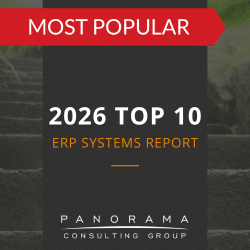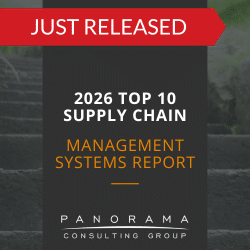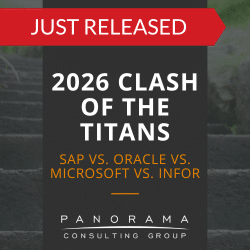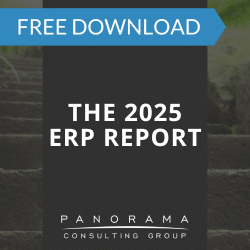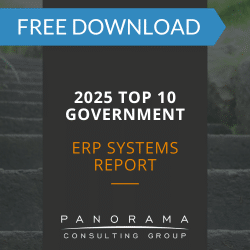- The City of Seattle faced a Workday class action lawsuit after widespread payroll errors revealed critical flaws in its software rollout.
- The failure highlights five key breakdowns: inadequate testing, overlooked business complexity, weak post-go-live governance, shallow change management, and lack of a structured pause mechanism.
- These challenges aren’t unique to the public sector—they’re common across industries, especially in high-stakes functions like payroll, finance, and manufacturing.
In early 2025, city workers filed a Workday class action lawsuit after months of pay discrepancies, missing overtime, tax errors, and misclassified benefits. These were symptoms of deeper issues in how the city rolled out its new software system, Workday, to modernize HR and payroll.
On paper, it looked like progress. In practice, it became a full-blown payroll software failure that eroded trust, disrupted operations, and triggered legal consequences. In other words: a municipal payroll system failure with far-reaching implications.
Today, we’ll unpack what this means for executive leaders. Whether you’re managing payroll for a city or trying to implement the best ERP system for manufacturing, the same principles apply. And if you’re still building your shortlist, this case is a reminder that every vendor on your list of ERP systems needs to be evaluated for how well it can handle real-world scenarios.
Contemplating litigation?
We have multiple software expert witnesses available for provision of reports, depositions, and testimonies.
When ERP Gets Too Far from the Front Lines
Seattle’s implementation failure shines a light on what happens when system design, governance, and user readiness don’t stay tightly aligned.
In Seattle’s case, the Workday payroll failure was about a system that failed to reflect the complexity of city operations: multiple unions, different pay codes, irregular schedules, and deeply embedded manual workarounds.
Here are five takeaways every executive should be thinking about, especially if you’re planning a large-scale ERP rollout or currently navigating one midstream:
1. Testing Must Simulate Pain, Not Just Process
Most software testing environments are sanitized. You validate a few clean transactions, check some boxes, and hope for the best. But in real life, payroll isn’t clean. It’s exception-heavy. And it operates under high stakes.
In Seattle’s rollout, many of the reported failures stem from edge cases that weren’t properly validated, such as complex overtime rules or multi-union pay structures.
Here are three ways to create better test coverage:
- Use real data from the field: uncleaned, unfiltered, and full of quirks.
- Simulate high-volume stress scenarios like fiscal year-end or seasonal hiring spikes.
- Involve frontline stakeholders (not just IT) in validating edge cases.
This isn’t just a payroll issue. Manufacturers should take the same approach when testing shop floor logic or quality management.
2. Your Business Rules Are the System
One of the most common failure points in any software implementation is hidden complexity that doesn’t surface during planning.
In Seattle’s case, many of the pay rules embedded in legacy processes weren’t fully captured or translated during configuration.
Here are three best practices for surfacing complexity:
- Map not just processes, but business rules, exceptions, and contractual obligations.
- Ask how often people “go around” current systems and why.
- Treat payroll logic as legally and financially sensitive infrastructure, not something to “streamline” without scrutiny.
ERP solutions for manufacturing face a similar risk. For example, batch traceability, regulatory compliance, and multi-plant scheduling all require precision. If you don’t map those rules up front, the system won’t catch up later.
3. Post-Go-Live Is When the Real Implementation Begins
The biggest mistake in most enterprise software implementations? Treating go-live like the finish line.
What happened in Seattle was not a failure at go-live. It was a failure after go-live. Problems emerged during day-to-day use, and there was no clear process for surfacing and resolving them quickly.
This is when weak vendor accountability becomes a liability.
Here are three ways to strengthen post-launch performance:
- Establish service level agreements (e.g., “zero paycheck errors”).
- Formalize vendor management roles inside your organization.
- Use independent advisors to track post-go-live metrics and challenge assumptions.
When you’re evaluating options from your ERP software list, ask how each vendor handles post-launch support, escalations, and issue resolution. If the answer is vague or “handled by tickets,” that’s a red flag.
4. Change Management Is Capability Building
In many software projects, change management gets relegated to communications or training. But real change leadership goes further. It’s about building capability at the front lines, so the people using the system actually understand how it works.
In the Seattle case, many users didn’t know how to validate their own pay, how to report issues, or what to expect from the new process. This lack of readiness turned early errors into systemic distrust.
Here are three ways to strengthen change leadership:
- Don’t stop at vendor-provided training. Coach teams through real scenarios in the new system.
- Tailor communication by role, risk level, and business unit.
- Track behavioral adoption, not just logins or completion rates.
Whether you’re rolling out payroll, MRP, or CRM functions, change adoption doesn’t happen unless the system feels usable.
5. If You Can’t Pause, You Can’t Succeed
Pausing a software rollout isn’t always a failure. Sometimes, it’s the smartest move you can make. But it only works if your governance structure allows it.
In Seattle’s case, it’s unclear whether any formal readiness gates were in place, or whether the program had the ability to delay launch when it became evident the system wasn’t ready.
A structural problem we see in both public and private sector ERP projects is that go-live becomes inevitable, not conditional.
Here are three ways to embed healthy friction into go-live decision-making:
- Define no-go criteria as clearly as go-live criteria (e.g., unresolved defects, untrained users, incomplete integrations).
- Empower project leaders with the authority to pause and the support to do it without blame.
- Use third-party ERP consulting services to review readiness objectively, without internal bias or vendor pressure.
This is about recognizing that delays may cost time, but uncontrolled rollouts cost trust.
Learn More About ERP Software Failure
Seattle’s Workday payroll failure story offers an opportunity for every executive to pause and ask:
- Do we really understand the complexity of our operations?
- Are we stress-testing our systems before rollout?
- Are our people truly ready for what’s coming?
- And do we have the courage to pause, re-evaluate, or even change direction if needed?
If the answer to any of those is “not yet,” now is the time to act.
Independent ERP consulting services exist for exactly this reason: to help organizations avoid being the next headline. They aren’t there to sell software. They’re there to challenge assumptions, protect investments, and ensure technology serves the business. Contact us below to learn more.






